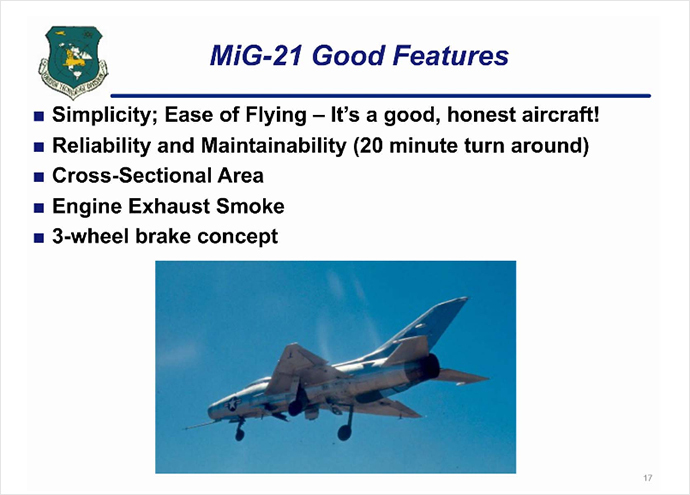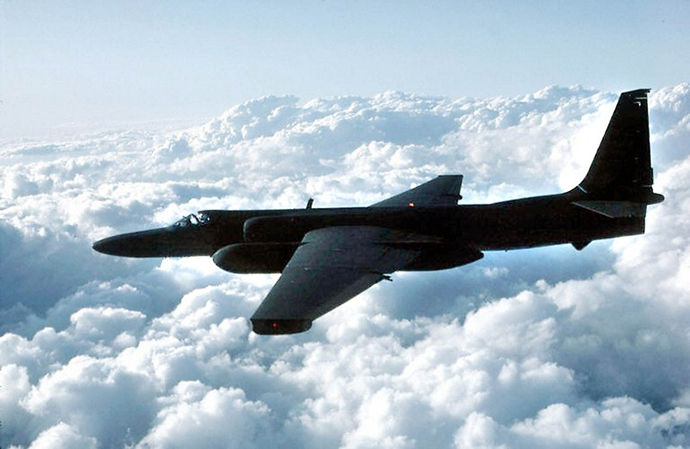Declassified: US air force tested secretly acquired Soviet fighters in Area 51

The US government secretly acquired and tested Soviet war planes during the Cold War at the top secret air base Area 51, according to declassified documents released on Tuesday, which shed further light on the base deep in the Nevada desert.
In August this year the CIA confirmed the base existed when it released declassified documents through a freedom of information act requested by the George Washington University National Security Archive. The documents confirm what many already suspected: that Area 51 was used to test numerous US air force and navy aerial programs.
One of these investigations during the Cold War was the testing of the early generation of MiG fighter planes. From January to April 1968, the Israelis loaned a MiG 21 to the US, which they had acquired in 1966.
Israel had got hold of the MiG 21 from a captain in the Iraqi air force, who with the help of the Israeli intelligence agency, Mossad, defected to an airbase in northern Israel.
The US referred to the MiG 21 as the YF-110, but in fact it was hardly top secret and the MiG 21 was in use with all air forces in the Warsaw Pact as well as Soviet allies like Egypt and Vietnam. However, the American pilots who flew the MiG concluded that it was “a good honest aircraft”.

The idea was to use these acquired soviet aircraft in war games to see how they compared tactically with what the US was flying, under what was bizarrely called the Have Doughnut program.
A similar program took place in 1967 with the snub nosed, outdated though versatile MiG 17, under the nonsensically-named Have Drill and Have Ferry programs.
As part of the evaluation scheme, the US military would simulate a Soviet-style air defense complex made out of systems with names like Mary, Susan and Kathy, although it might have been more apt if they been called Masha, Nastya and Katya.
Other MiG examinations took place at a later date, although these programs have not been declassified. However, the use of Soviet Aircraft in this period in the airspace of Area 51 earned it the nickname Red Square.
Stealth and security
The released documents also reveal the range of US aircraft tested on the site, including the Stealth F-117 project, an air to air combat fighter that could not be picked up by radar.
The stealth helicopter that allegedly took US Navy seals on the raid into Pakistan, which resulted in the death of Osama Bin Laden in May 2011, may also have been tested at Area 51.
While perhaps the most famous and one of the first planes to have
been put through its paces at the secret Nevada site was the U2
spy plane. Testing began in 1955 and despite an incident over the
USSR in 1960, where a U2 was shot down by a soviet ground to air
missile, it is still in use in the US air force today.

Security concerns led to a ban on photographs of the area taken by American astronauts doing routine work on the Skylab 4 in 1974, an American space station which was taking photographs of the earth.
The site was passed from the CIA to the air force in the late 1970’s but it wasn’t until the mid-1990’s that it became widely known.
By 2007 civil aviation pilots noticed that Area 51 appeared on
their aircraft navigation systems' latest Jeppesen database
revision, with the ICAO airport identifier code of KXTA. This
probably inadvertent release of the air base’s data led the
Aircraft Owners and Pilots Association to advise that student
pilots should not consider it as a destination, when plotting
their flight logs.















